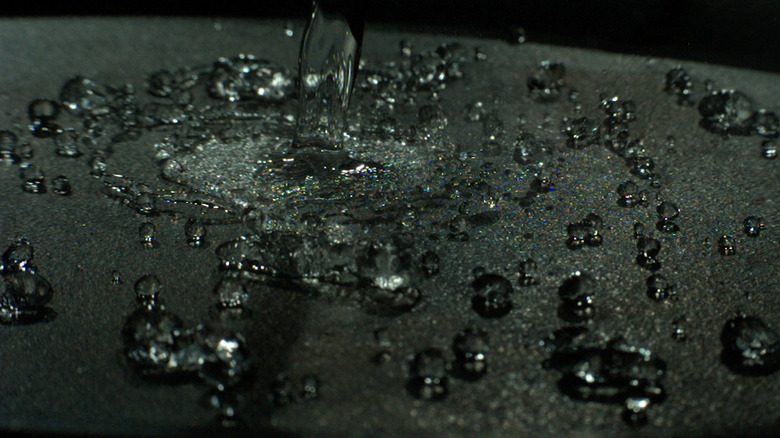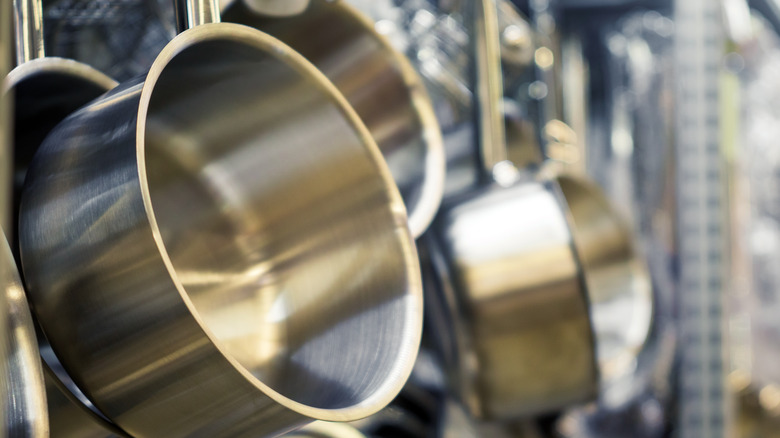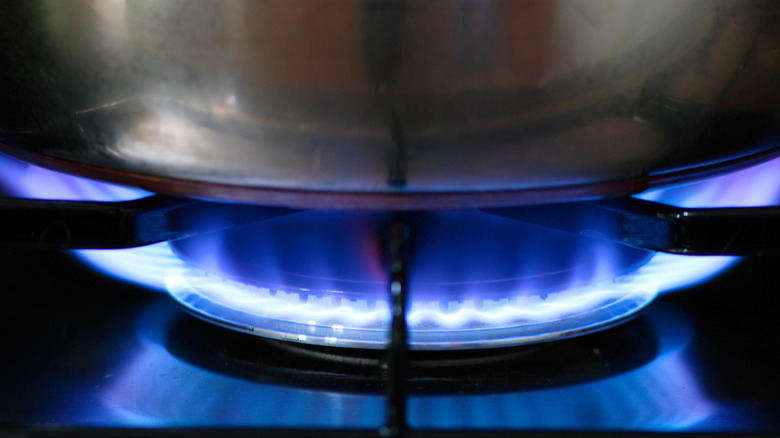What Is The Leidenfrost Effect, And How Can It Help Your Cooking?
No two home cooks are alike, but we find that a couple of general categories are useful in distinguishing people who spend a lot of time in the kitchen. There are the efficient and organized types who have either worked in a restaurant or watched "The Bear" more than once. On any given night, you might find them wiping down surfaces that appear to be clean, de-thawing the homemade chicken stock they keep in the freezer at all times, or measuring ingredients into teeny-tiny dishes. We'll call this group the "mis-en-place."
On the opposite end, there are the spontaneous types who don't know what's for dinner until they're in the act of making it. This is the "I'll know it when I see it" group. Either category might play host to a sub-genre we'll call "the scientists." They're always quick to offer an unsolicited education on gluten formation, plant-cell binders, the Maynard reaction, and other concepts they learned by watching J. Kenji Lopez-Alt's YouTube channel. If you want to impress the scientists in your life with a new cooking term, rock their world with a primer on the Leidenfrost effect. It's useful for you to know, too.
A stainless steel pan's best friend
Stainless steel cookware looks almost indestructible when it's never been used, but a well-loved pan can quickly lose its silvery sheen to scratches made while trying to remove stuck-on food. After a few minutes of scrubbing, you might be inclined to throw in the towel and turn to a different kind of pan, such as nonstick or cast iron. How, then, do stainless steel pots and pans look so shiny and new in restaurant kitchens, where they're put through far more fiery tasks than in the average home kitchen?
Two words: Leidenfrost effect. The term gets its name from Johann Gottlob Leidenfrost, who worked as a doctor in Germany in the 18th century. In a nutshell, it refers to the molecular process by which water slides across the surface of a pan while suspended by a thin layer of gas, which occurs when droplets hit metal at a temperature of around 240 degrees Celsius. Interestingly, the effect might be powerful enough to fuel an engine that could take humans to Mars. In the meantime, here's how that vapor can transform your stainless steel pan into a nonstick mainstay.
Crank the heat
To make the surface of your stainless steel pan a little closer to a nonstick, turn to the Leidenfrost effect. Start by preheating your pan over high heat. Once things are feeling toasty, add a few drops of water to the pan. If they glide across the surface like a musical theater actor on a stage wire, that means your pan is hot enough and ready to take on whatever you have in mind for dinner. The heat will ensure that the food won't stick to the pan quite as much as it would otherwise. In turn, cleanup will be much easier.
That said, stainless steel is not like other alloys; the nonstick properties it gives you when you let water sputter out on its surface will only last for the duration of an individual cooking session. So, unlike a cast iron or nonstick pan, which hold up just fine to the cold pan method of cooking steak employed by America's Test Kitchen, stainless steel pans should only be used when they're hot enough for the Leidenfrost effect to take place. Before you add your cooking fat — be it oil, butter, or something else — be sure your pan is at the right temperature.


